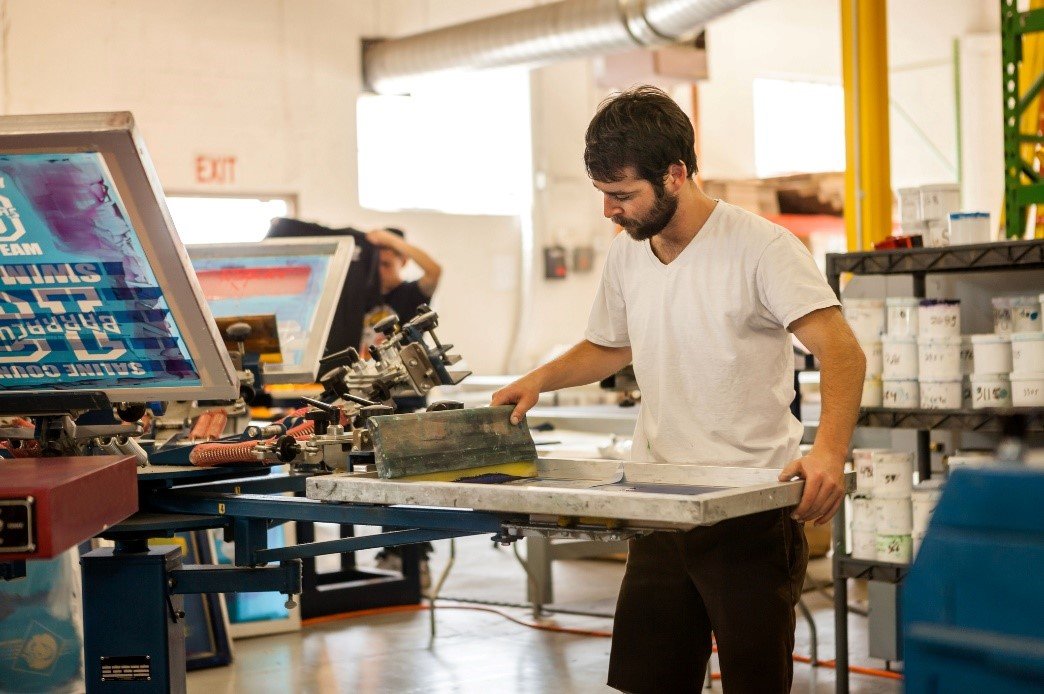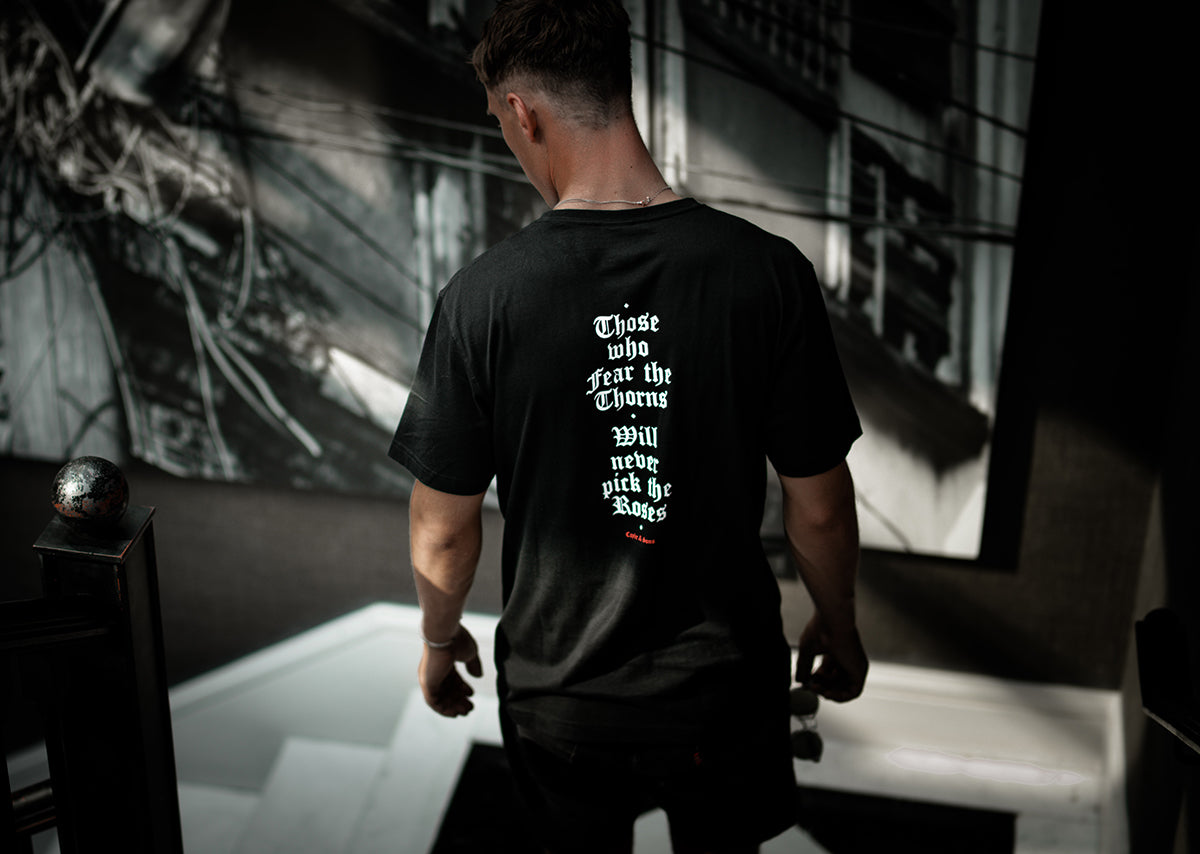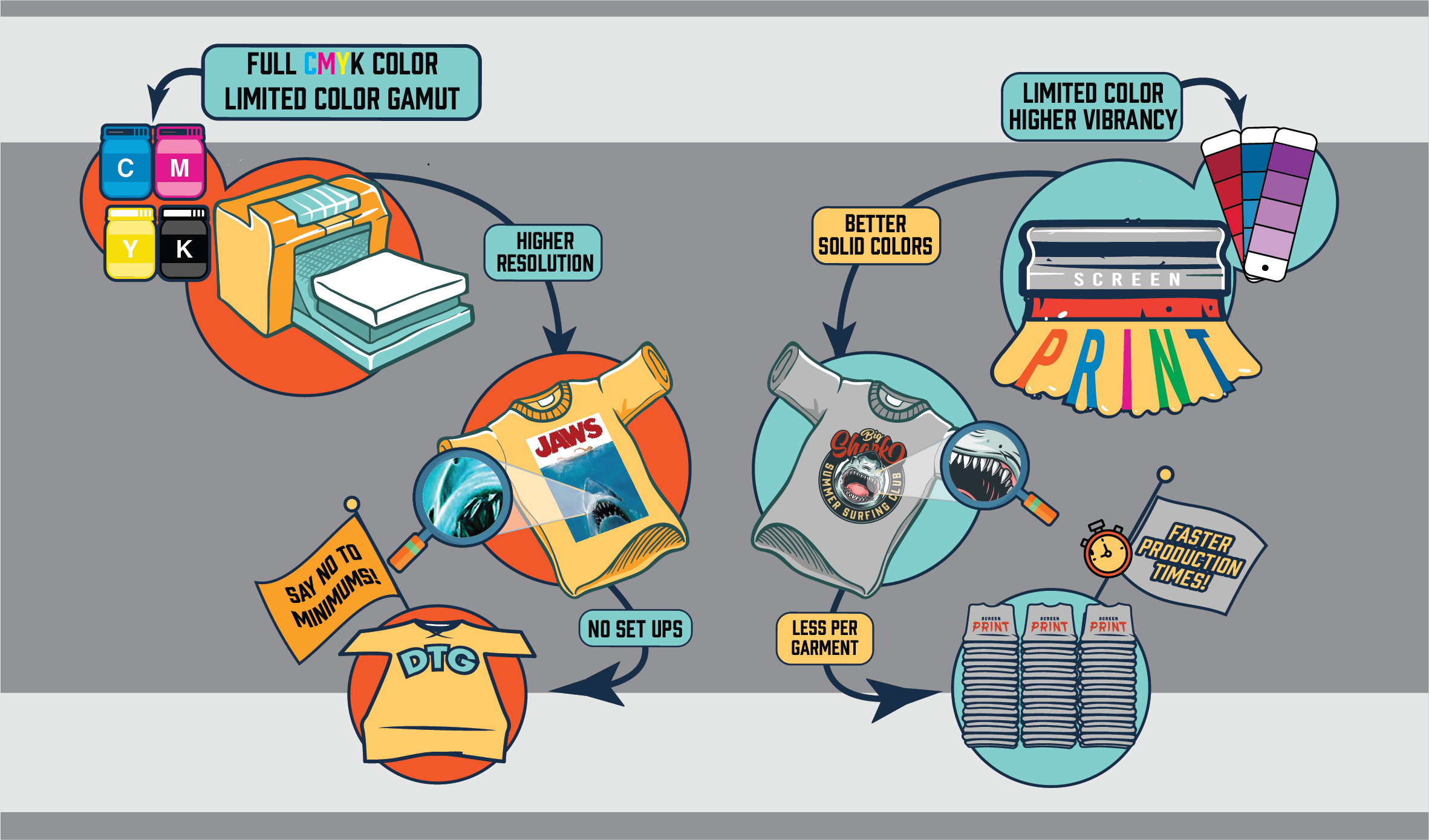3 Simple Techniques For Tx Tees
Table of ContentsSome Known Incorrect Statements About Tx Tees Top Guidelines Of Tx TeesNot known Facts About Tx TeesTx Tees Things To Know Before You Get ThisThe 8-Minute Rule for Tx TeesWhat Does Tx Tees Mean?The Basic Principles Of Tx Tees
That brings your overall to around $1,900 before tax obligation and delivery. Accumulate various other expenses, like the number of energies it requires to run the shop and the price of ink and emulsion per design. screen printer. Take the print below. This is a one-color image, so the expense of ink per tee shirt is roughly 20 cents.The emulsion should only be a few cents since you 'd only require to layer one display for this work. Usually, printers attempt to make up to 45% revenue on a print task.

With DTF, you can print a handful of t shirts, or simply one. Both screen printing and DTF have their particular niches in the world.
Examine This Report about Tx Tees
The finest means to know? Ask around and see what print stores like your own are doing. custom t-shirt design. Attempt both out and see which you like much better
When you're choosing what sort of printing approach to make use of for publishing your art work designs on your garments, it is necessary that you understand the distinctions in between these 2 strategies so you can make the most of results while lessening prices. Display printing is one of the most generally made use of technique for printing layouts on fabrics.
DTG printing is also called place or direct to garment printing because it prints just what is required rather than making a screen as screen printers do. https://pubhtml5.com/homepage/kmsyk/. Screen printing functions by screen filler squeegee display printing ink screen mesh display, then moving the image to garment making use of warm and/or stress
The DTG printer utilizes unique dye-sublimation inks that are applied right into a pre-designed image by an electronic printing system. The inks become component of the textile, allowing for vivid colors and remarkable information. It's also understood as spot or direct to garment printing due to the fact that it prints just what is needed as opposed to making a display as screen printers do.
Everything about Tx Tees
First, it's much quicker - you can publish a fullcolor photo in mins, instead of hours for screen printing. Second, there's no set up time or costs involved - you can print any design you like, without having to create a screen. Third, there's no waste - because screen printers display print one layout at once, they need to evaluate each shade individually.
The paper is extremely costly and can only be utilized once. Once it's printed on, it has to be discarded. - The initial purchase rate is reduced than the in advance financial investment of DTG printers- You can publish multi-color layouts one screen each time as opposed to having to publish each shade individually like DTG printing.

Some Known Incorrect Statements About Tx Tees
Nonetheless, instead of using display mesh as display printers do, dye sublimation printers use laser innovation to move your images onto garments or paper. A warmth process moves the color from its solid-state straight into the gas phase which consequently integrates it onto textile substrates when they are rapidly heated up to high temperature levels under high stress.
Sublimation printing is environmentally friendly. It utilizes much less water than screenprinting, and due to the fact that it does not entail the use of damaging solvents, it's risk-free for all kinds of garments. The color sublimation inks are additionally odorless when cured, unlike screen printers that use damaging chemicals during the screen printing process that leave behind an unpleasant odor.
They likewise save money on costly equipment like exposure units since dye sublimation printers don't call for a UV direct exposure device or a flash treatment stove that is commonly made use of in display printing (custom t-shirt design). What is straight to garment printing (DTG Printing)? DTG printing is a digital screenprinting process that publishes straight onto material utilizing specialized inkjet printers
Not known Factual Statements About Tx Tees
DTG printing supplies lots of benefits over typical screenprinting, consisting of the ability to publish photographic quality pictures, greater shade vibrancy, and the capability to publish styles on darker textiles. DTG printers function by heating the fabric ink up until it becomes a gas. The gas then penetrates the fabric, bonding with the fibers to produce a permanent print.

Display printers just prepare their screen then begin publishing up until they run out of product or ink.- There is a wide variety of experienced display printers throughout the globe, which can be valuable for novices. - It's a slower process - screen printers often need to wait on the ink to dry before they can publish the following color- Display printers call for manual work, so there's a greater understanding contour and it takes longer to produce a top quality design- Display printing isn't as precise as DTG printing, so you may obtain some "blood loss" of colors from one component of the picture onto another otherwise done appropriately.
Tx Tees Things To Know Before You Get This
Instead of making use of screen mesh as display printers do, color sublimation printers utilize laser modern technology to transfer your pictures onto garments or paper. A warmth process moves the color from its solid-state straight right into the gas phase which consequently integrates it onto fabric substratums when they are swiftly heated to heats under high stress.
Sublimation printing is environmentally friendly. It makes use of less water than screenprinting, and since it does not involve making use of dangerous solvents, it's safe for all types of clothing. The color sublimation inks are also odor free when healed, unlike display printers that make use of damaging chemicals throughout the display printing process that leave behind an undesirable smell.
They additionally save money on expensive devices like direct exposure devices since dye sublimation printers don't need a UV direct exposure device or a flash treatment stove that is generally utilized in display printing. What is straight to garment printing (DTG Printing)? DTG printing is an electronic screenprinting procedure that publishes straight onto textile using additional reading specialized inkjet printers.
5 Easy Facts About Tx Tees Shown
DTG printing supplies several advantages over standard screenprinting, including the capability to publish photo high quality pictures, greater color vibrancy, and the capacity to publish styles on darker fabrics. DTG printers function by warming the fabric ink up until it transforms right into a gas. The gas after that permeates the textile, bonding with the fibers to develop a long-term print.